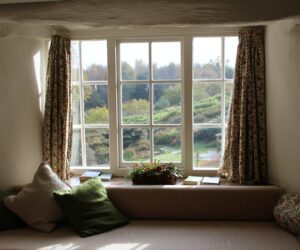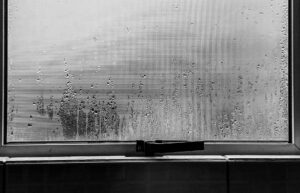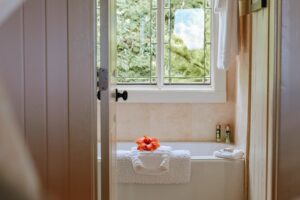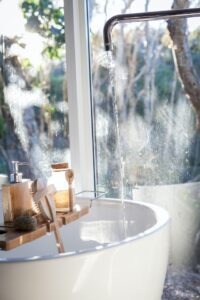 Double glazing has numerous benefits for both you and your home – not to mention your bank balance. Some of these include insulation, energy savings, noise prevention, and a condensation-free appearance; but what happens when double glazing fails?
Double glazing has numerous benefits for both you and your home – not to mention your bank balance. Some of these include insulation, energy savings, noise prevention, and a condensation-free appearance; but what happens when double glazing fails?
If you’re starting to see condensation or “misting” between two double-glazed glass panes, then it is likely that your double glazing has failed and therefore the unit can no longer keep moisture or cold air out as it’s designed to. The ideal solution would be to have your failed glazing repaired as soon as you can. However, we know this isn’t always possible. With the rising cost of living there can be other priorities that come into play, and the idea of fixing your double glazing can swiftly become pushed down your list of things to get done.
However, it’s important to remember that when you don’t repair failed double glazing, it can quickly become an even more expensive problem. While it may not have as much of a noticeable an effect on your home in the warmer summer months, as we head into winter it is important to check for (and repair if necessary) your double-glazing windows and doors.
Failure to do so can not only worsen the damage to your windows, sealants, and the area surrounding them; but can also have a major financial impact later down the line. This could be due to an increase in your energy bills due to the loss of heat in the home, or on the damage caused by rot, mould and damp when outdoor moisture enters the home.
Mould and Damp
Moisture that enters the home through damage to your double glazing can cause a host of problems, most significantly mould and dampness. The inside of your home tends to be a lot warmer than outside during the colder months, especially if you use your heating frequently. The warmer air in the home can hold more moisture than cool air outside. So, the difference in temperature outside means that on single-glazed windows, or damaged double-glazing, condensation will form on the inside of your windows – the cooler surfaces in the home that any damp can easily settle onto.
This doesn’t happen on double-glazing that isn’t compromised, as the gas-filled gap between the two panes of glass acts as a barrier. This gas barrier balances out the heat difference between your home and the outdoors, so the inner pane of glass remains at a temperature closer to room temperature. This limits the level of condensation that can form; if any at all.
Any of the additional water and moisture that does enter the home when you don’t fix double glazing can cause walls and ceilings to fall victim to dampness. Furniture and fabrics nearby can also grow mould, or even rot. This can add up to a considerable expense if you have to replace furniture or repair damages, especially if the contents damaged have further sentimental value!
As an additional concern, moulds can produce allergens, irritants and even toxic substances that can affect your respiratory health. This can be especially harmful to those suffering from asthma and can also cause allergic reactions alongside more severe consequences. We are sadly seeing an increase of the drastic consequences caused by ill maintained homes that leads to damp, as children and the elderly fall victim to harsher respiratory illnesses as a result. Fixing these concerns as soon as they are noticed may reduce the chances of contracting even life-threatening symptoms that may not seem so much of a threat to begin with. Such is the severity of not dealing with any areas of the home that are prone to damp or mould.
Higher Energy Bills
The home loses a shocking 20% of its heat as it escapes through windows and doors. Failing to keep heat in by following basic maintenance routines and repairing your double glazing as soon as you notice an issue can further increase your energy bills.
With energy prices skyrocketing currently, every penny helps when it comes to keeping those gas and electricity bills down. Quality double glazing that hasn’t failed is impressively energy efficient and environmentally beneficial. Without it, you’re unable to trap heat and prevent draughts – so you’ll end up using much more energy when trying to heat your home this winter.
Rotting Frames
Rotting window frames are a common cause for failed double glazing and are especially common in older homes. As mentioned earlier, much like mould, rot forms from exposure to water and moisture. Wood is an absorbent material and over time can soak up and hold quantities of water. The longer the wood is exposed to the increase in moisture, the bigger the risk of damage – as rot is a type of fungus which loves damp conditions.
This increase in moisture can come from condensation or even long-term exposure to severe weather conditions, which explains why rotting frames can be more common in older homes. It’s important to perform regular checks on your window frames and even the sealant, to ensure rot and other damages are caught early. Discoloured paint or crumbling and softened woods are the earliest signs that your window frames have begun to rot. It’s important to tackle these problems quickly to avoid further damage to your home.
Call Cloudy2Clear for a Free Quote
To avoid the above and to have your failed double glazing fixed, get in touch with our experienced team at Cloudy2Clear. We focus on repairing only the areas of your double glazed units that really need working on. This means our prices are much lower than those companies that will replace entire frames unnecessarily! To save costs while maintaining the health of both your home and your family, we can help.
Call us now on 0800 61 21 119 – or fill out our online contact form to find out more about our double glazing repair services. Operating across the UK, our friendly engineers will provide a free quote before coming out to check the condition of your double glazing. They will then be able to calculate the most cost-effective way of repairing or replacing any compromised units.
 With increasing energy costs for businesses, companies will be wondering how best to save money on their energy bills as we head into winter. Many of the little things you do to save energy at home can in fact be applied to your business and office spaces.
With increasing energy costs for businesses, companies will be wondering how best to save money on their energy bills as we head into winter. Many of the little things you do to save energy at home can in fact be applied to your business and office spaces. Condensation isn’t rare. Many homeowners therefore tend to overlook it when it appears on their windows. Condensation can form on any cool surface, and we see it every day. You probably notice water droplets forming on other surfaces in your bathroom after you have a hot shower – like mirrors, tiles, and shower panels.
Condensation isn’t rare. Many homeowners therefore tend to overlook it when it appears on their windows. Condensation can form on any cool surface, and we see it every day. You probably notice water droplets forming on other surfaces in your bathroom after you have a hot shower – like mirrors, tiles, and shower panels. Having double glazing installed is one of the best ways to improve insulation in your house. This can be a worthy investment, especially with winter approaching and energy bills on the rise.
Having double glazing installed is one of the best ways to improve insulation in your house. This can be a worthy investment, especially with winter approaching and energy bills on the rise. Bathrooms are often a problem area for those struggling with damp in the home. They’re usually the smallest rooms in the house, yet they’re equipped with plenty of utilities that create steam and lead to condensation on a daily basis.
Bathrooms are often a problem area for those struggling with damp in the home. They’re usually the smallest rooms in the house, yet they’re equipped with plenty of utilities that create steam and lead to condensation on a daily basis. Many of the first signs of condensation and damp within a bathroom begin with the windows. You might start to notice puddles of water forming around the windowsill or mould starting to grow.
Many of the first signs of condensation and damp within a bathroom begin with the windows. You might start to notice puddles of water forming around the windowsill or mould starting to grow. A key step in improving the security of your home is your front door. As the main entry to your house, it’s often the first thing any criminals will target when trying to enter your property. The good news is, there are now plenty of front door security considerations you can think about installing to keep your house safe.
A key step in improving the security of your home is your front door. As the main entry to your house, it’s often the first thing any criminals will target when trying to enter your property. The good news is, there are now plenty of front door security considerations you can think about installing to keep your house safe.
